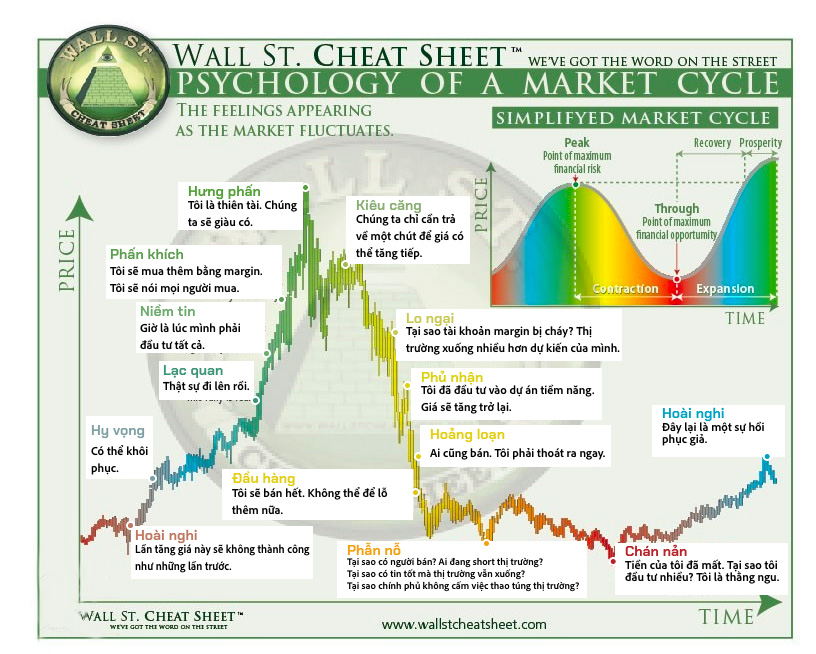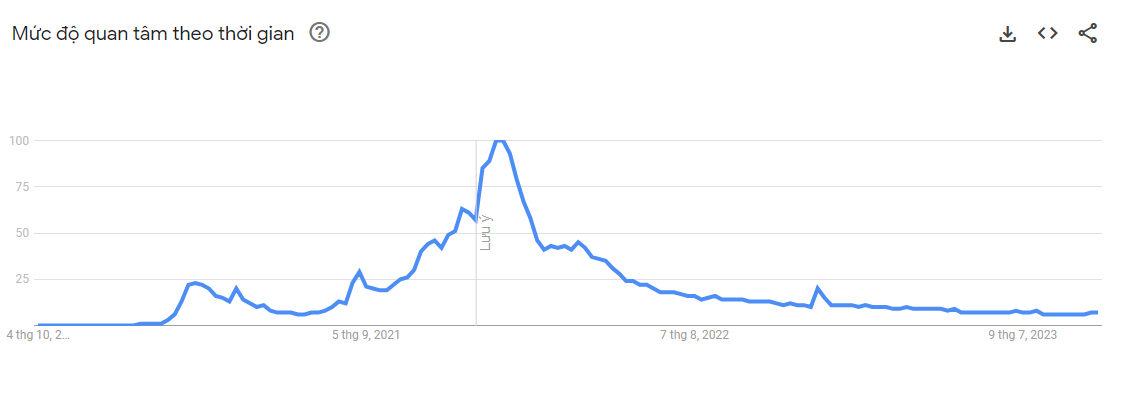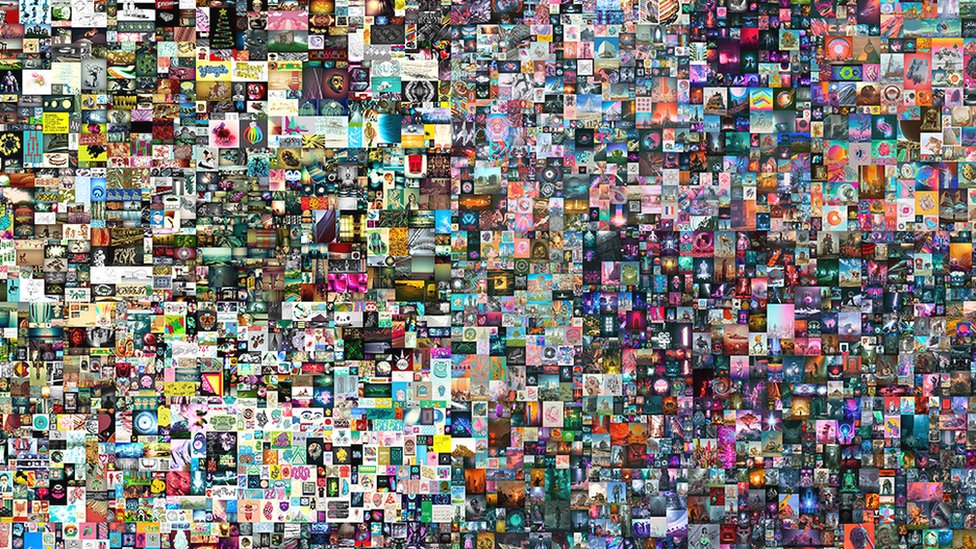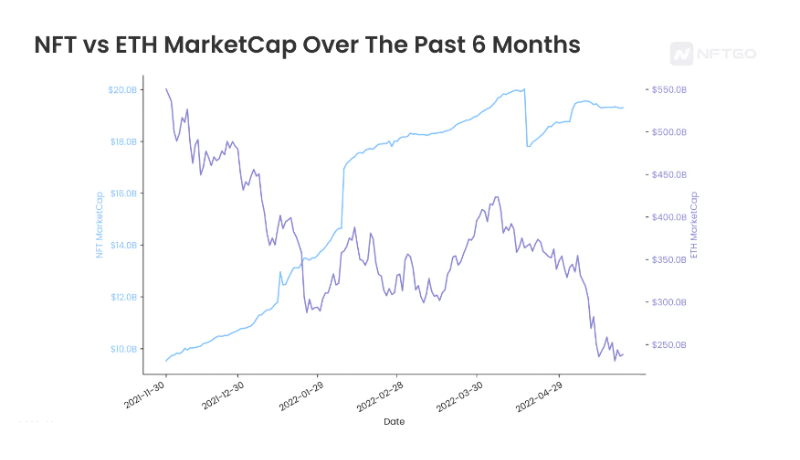Like the general Crypto market or the traditional stock market, the NFT market also exhibits cyclicality with periods of price increases and periods of price decreases. In this article, let’s join Weakhand to learn about the NFT market cycle so that everyone can have a comprehensive perspective for their investment process.
Before jumping into the article, everyone can refer to some of the following articles to understand better.
- What are NFTs? All about NFTs
- Where are we in the NFT Bear Market
What Is a Market Cycle?
Market cycles are trends that appear in different markets or financial environments. This is illustrated by rising or falling peaks and troughs as well as alternating fluctuations in sideways markets. Causes of cycles include factors such as the amount of liquidity in the economy, interest rates, technological advances and black swan events.
Surely everyone has seen the chart below in telegram groups or on the Twitter platform. It allows people to identify specific parts of the cycle based on what they believe is consistent with current market sentiment.

Market cycle chart
More broadly, the market cycle can be divided into four main stages including: Accumulation, price increase, distribution and price decrease.
- Accumulation phase: This stage usually occurs when the general market has bottomed. Market sentiment is bearish but lower valuations make this period attractive for early adopters and value investors.
- Price increase phase: This is the period that witnessed strong growth in the prices of a series of projects on the market. Market sentiment at this time will gradually change from a phase of skepticism to optimism and excitement as many people show off their profits on social networking platforms.
- Distribution stage: The distribution phase is usually a short period of time in the market cycle. The prices of assets peaked and remained within a certain range and the market sentiment at this time was extremely excited and arrogant. Traders often look for patterns such as head and shoulders or double tops to confirm a possible trend reversal.
- Discount period: This final stage is often the most difficult for investors because many people get stuck in holding positions for reasons such as greed or Fomo.
Although these periods are constant across different markets, they vary in frequency and length because each market has its own fundamentals. The NFT market cycle is no exception and let’s find out together.
How Does the NFT Market Cycle Work?
Unlike the Crypto market, which has gone through many cycles and started the growth season with Bitcoin Offering, the NFT market has only become widely known in 2021. So let’s go back to history at the beginning of 2021. Let’s see how the NFT market cycle works.
Popularity of the NFT market
Popularity is also a factor to evaluate market sentiment and see what stage of the market we are in. I will use two data sources: Google Trend and transaction volume on the NFT market to evaluate the market cycle.
First, below is a Google Trend chart showing NFT search trends on Google. We can see NFTs being searched and known by people in early 2021 and having a small growth cycle after that before becoming explosive in the period from July 2021 to May 2022. At the present time, the NFT index based on Google Trend only falls between 5-7 points, signaling that the market is in a cold winter period and there is not much interest in NFTs.

Popularity of NFTs according to Google Trends
When looking at the trading volume during the uptrend market period from July 2021 to May 2022, we can clearly see the growth in trading volume, especially in the early period of 2022.

NFT trading volume between July 2021 and February 2022
Every bull wave begins with a bullish trigger point, usually an event that attracts user discussion and attention. This is marked by 2 boxes circled in red 1 and 2 as shown above. After this period, the trading volume in the market witnessed a sudden decline accompanied by a decrease in the price of NFT Blue Chip collections. This signals an impending major bearish trend.
Stages of development in the NFT market
Almost every trigger point is related to exaggeration. I will divide the popular sources of NFTs into two groups including: Media and community.
The first is media that often involves works of art encoded as NFTs. In March 2021, American digital art Beeple sold his NFT artwork called Everydays: the first 5000 days for over 60M USD and immediately attracted huge media interest.

Everydays – The First 5000 days
Due to widespread media attention, other Art NFTs on the market also saw impressive growth. Soon after, celebrities such as Takashi Murakami and Snoop Dogg also entered the market and NFTs seem to have been hyped by the media thereby further promoting user entry into the NFT market .
The widespread popularity of Art NFTs in media also created a small growth cycle, driving heat in the market and entry of new players. This has also been shown on the Google Trend chart in the period from January to March 2021.
The next period from July 2021 to May 2022 is also the period when the market officially enters a strong growth wave. The trigger point for this period is the explosion of the Play To Earn game movement, led by Axie Infinity. This was also the start of one of history’s most successful collections, Bored Ape Yacht Club (BAYC). The growth in the price of NFTs contributes to a catalyst that motivates people to share information about NFTs on social media platforms, thereby increasing the popularity of NFTs. During this period, we also saw the participation of many famous people rushing to buy NFTs such as: Elise Boucher, Ja Rule, Lewis Capaldi,…
After being affected by the general Crypto market with the collapse of Luna, the NFT market officially entered a bearish phase. As is often the case during bearish periods which are accompanied by major Fuds in the market, we see Fuds regarding Bored Ape Yacht Club (BAYC) regarding supply dilution issues, the crash of Azuki after the launch of Azuki Elementals or of Degods with Degods Season 3. All this has created a fear mentality in the market causing investors to sell off their NFTs, consequently causing the price of NFTs are falling further and further.
Money Flow in the NFT Market
Similar to the general Crypto market, there is always a flow of money back and forth between different segments in the market. When looking at the Uptrend timing in 2020 and 2021, we start with Defi Summer 2020 → Layer 1 in early 2021 → Trend Gamefi (Play To Earn boom with Axie Infinity leading the way) → Trend Metaverse (led led by The Sandbox and Decentraland) —> Trend NFT (led by BAYC, CryptoPunks).
Through a growth cycle, we see that cash flow does not stay in one segment for too long and tends to move to other segments in the market. This is quite easy to understand, for example, the Defi trend with the token release Farm model has many disadvantages and no longer attracts the attention of users, forcing investors to move to search for profits in other markets. In another area, we can see the appearance of Trend Play To Earn with Axie Infinity as a typical example.
As for the NFT market, we also see the circulation of money through small segments, typically we see the market starting with Art NFT with digital artworks being sold for millions or even millions of dollars. tens of millions of dollars → NFT Gaming with the explosion of Axie Infinity → PFP NFT with the leadership of Bored Ape Yacht Club (BAYC) and CryptoPunks → Music NFT with the explosion of Sound.xyz.
In general, the market always needs innovation to develop and attract users. Therefore, during the investment process, people need to pay attention to which segments are receiving attention and receiving cash flow in the market. Choosing the right project with the trend appearing on the market helps significantly increase the profit margin that everyone can earn.
Compare NFT Market With Crypto Market
There are similarities and differences between the NFT market and the Crypto market. Currently, the NFT market is built on the Crypto market, so it is obvious that it is affected by the general market, although the reaction is often “slower”. As we can see in the image below, when the Ethereum market value started to witness a steep decline, the value of the NFT market was not directly affected and decreased immediately following.

Compare the correlation between NFT and ETH market capitalization
When market volatility occurs, the NFT market tends to react more slowly due to less liquidity. Additionally, network congestion makes gas fees expensive, which also prevents users from trading their assets. This is why trading volumes are down but we don’t see that in the floor prices of NFT collectibles. Conversely, when the Crypto market has small fluctuations, the NFT market tends to perform better.
summary
Investors’ psychology always appears in any market, so the cycle is always short or long depending on the nature of each market. Above is all the information that I want to introduce in this NFT market cycle article. I hope everyone has received useful knowledge.


